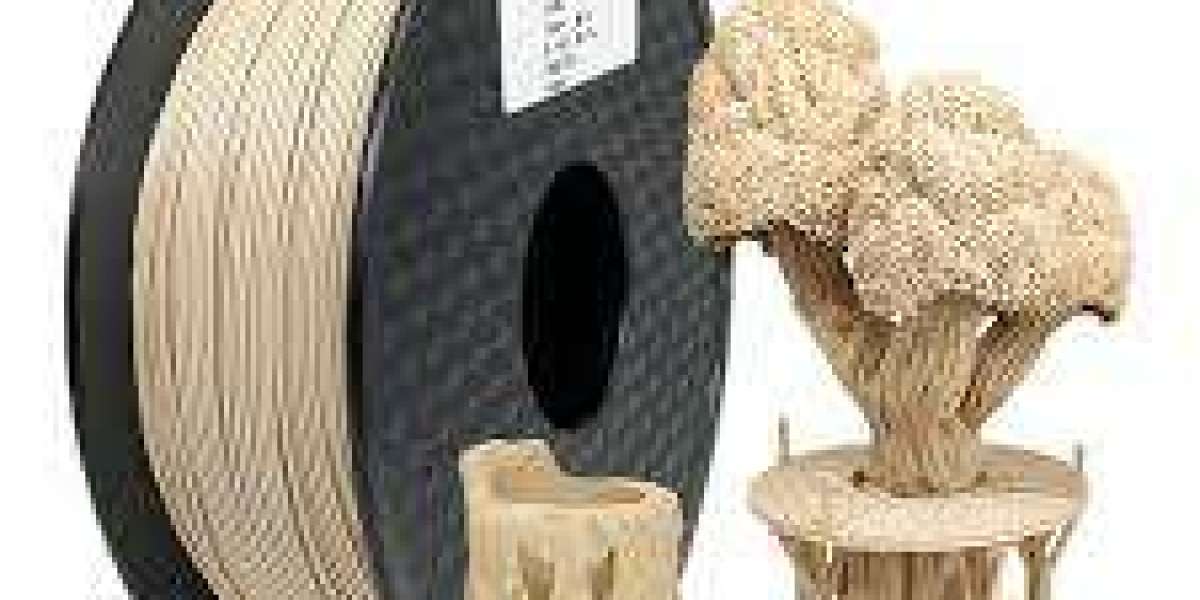Composed of PLA mixed with fine wood particles (such as bamboo, cedar, or birch), wood filament offers a unique tactile and visual quality, replicating the look and feel of real wood. This article explores the properties that give wood filament its characteristic texture, the printing techniques to bring out the best in this material, and its applications in projects that benefit from a realistic, organic finish.
What Gives Wood Filament Its Unique Texture?
Wood filament’s unique surface texture comes from the fine wood particles embedded within the PLA matrix. During the printing process, these particles distribute unevenly throughout the layers, resulting in a surface that mimics real wood’s grainy, natural texture. The final appearance of a print depends on several factors, including the type of wood used, the particle size, and the filament’s specific composition. Because of this, wood filament parts often exhibit a slightly coarse texture, creating an organic, rustic look that stands out from smoother filaments like PLA or ABS.
Surface Texture and Layer Lines
Unlike traditional filaments, where layer lines can sometimes detract from the overall appearance, the layer lines in wood filament prints tend to blend with the material’s natural texture, creating a more cohesive look. This blending effect is especially appealing for projects that aim to replicate natural materials, as it provides a realistic, wood-grain effect on the print’s surface. Moreover, wood filament’s texture often hides small imperfections and makes post-processing easier, as the filament can be sanded and stained, just like real wood.
Techniques for Enhancing the Wood Texture in Prints
1. Adjusting Printing Temperature
One unique feature of wood filament is its ability to vary in color with changes in print temperature. Higher temperatures can create a darker, more “burnt” appearance, adding depth and richness to the texture. By adjusting the temperature during a print, users can create subtle color gradients, resembling wood grain and enhancing the organic look of the printed piece.
2. Layer Height and Print Speed
Larger layer heights (such as 0.2-0.3 mm) and slower print speeds allow the wood particles to distribute more evenly, bringing out the filament’s texture. Additionally, slower printing reduces the likelihood of clogging, a common issue with wood filament due to its particle content.
3. Post-Processing Techniques
Wood filament can be sanded, polished, and even stained, providing opportunities for further customization. Sanding smooths out any rough edges while enhancing the natural grain pattern, and staining adds color variation that mirrors the appearance of natural wood. For a rustic or antique look, users can apply varnishes or waxes that add shine and deepen the grain effect.
Applications of Wood Filament for Texture-Based Projects
Wood filament is ideal for creating items that benefit from an organic, natural look. Popular applications include decorative items, such as vases, sculptures, and picture frames, as well as functional items like handles, coasters, and furniture accents. The material’s realistic texture and warm aesthetic make it particularly well-suited for projects that aim to bridge the gap between traditional craftsmanship and modern 3D printing technology.
Conclusion
Wood filament brings an unmistakable surface texture to 3D prints, providing a realistic, wood-like finish that’s perfect for a variety of applications. By understanding and optimizing printing techniques for wood filament, users can achieve highly detailed, natural-looking pieces that celebrate the blend of technology and organic aesthetics. Whether for home décor, crafts, or functional objects, wood filament offers a versatile way to add warmth, texture, and personality to 3D printed creations.








